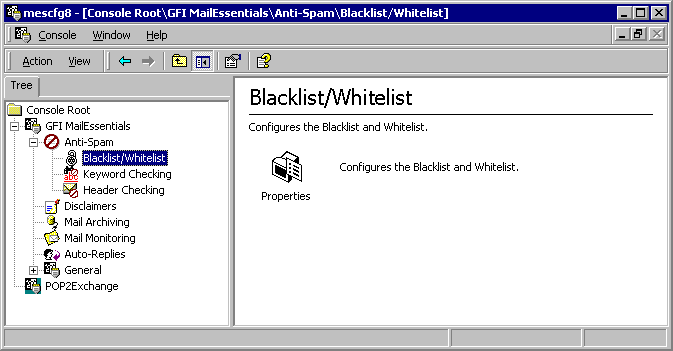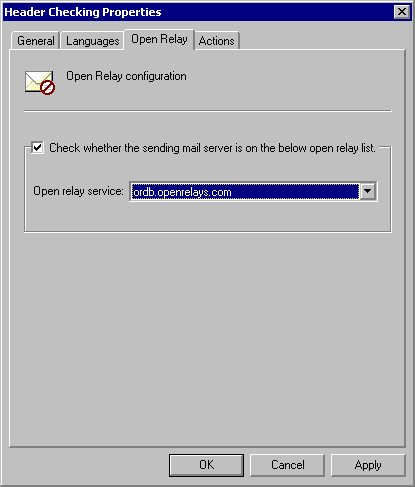Striking a balance between
securing network resources and ensuring users have the tools they need to
do their job presents a difficult quandary for IT managers and network
administrators alike. If your network is like most, your users are likely
inundated with almost unmanageable levels of junk email. Spam is not only
intrusive and annoying, but also costly in terms of server storage space and
user time. Providing users with access to email also comes with
a security risk by providing a facility with which users can easily forward
data to other users or even customers, be it sensitive corporate information or
simply inappropriate content. Companies need the ability to both
monitor and manage email resources as necessary for both legal and/or security
reasons more than ever before.
With the latest release of its MailEssentials package, GFI has made big improvements on an already impressive list of features. Dan DiNicolo says it might be the best weapon you’ll ever use in the war against spam.
Out of the box, most email
server products provide limited monitoring, security, and anti-spam functions.
In those that do, the feature sets tend to be weak and seemingly implemented as
an afterthought. However, the new GFI MailEssentials 8 product from GFI Software
provides some of the most comprehensive anti-spam capabilities currently
available, but also industrial-strength mail monitoring, the ability to add
disclaimers to all outgoing messages, and more. Impressively, GFI provides many
of the product’s best features as freeware, making GFI MailEssentials 8 a
must-evaluate product for administrators of large and small networks alike.
Anti-Spam
Features
Version 8 marks a new
beginning for GFI MailEssentials. In the past, the product relied on very
common anti-spam capabilities in the form of keyword lists that needed to be
manually created. While this method is effective for blocking spam messages that
include offers of university diplomas, cheap mortgages, and a variety of “free”
offers, the creation and maintenance of the keyword lists can be cumbersome,
especially considering the increasing creativity of spammers show getting their
messages through to users.
With GFI MailEssentials 8,
it seems GFI has recognized the need for a much higher level of spam
detection in order for its product to reach maximum effectiveness. Keyword and
message header checking are still a central component, including a great default
list that includes many of the most commonly used spam keywords. However, the
use of blacklists and its patented whitelist is what really sets GFI
MailEssentials 8 apart from the competition.
For those not familiar with
these terms, blacklists and whitelists are among the most effective ways to
eliminate spam. A whitelist is a list of email addresses, maintained by
GFI MailEssentials, which includes all addresses from which you always wish to
receive mail such as your customers or suppliers. A blacklist
is basically the opposite &emdash a list of addresses from which you never want to
receive mail.

While individual addresses
and/or entire domains can be added to these lists manually, the process can also
be automated in two key ways. First, you can configure your whitelist settings so when any user in your organization sends a message to an external
person, that address is automatically considered valid and added to the
whitelist. This helps ensure incoming mail from these users is never
considered to be spam, and is delivered as normal. Second, instead of trying
to manually block the individual email addresses associated with incoming spam
messages (which are usually false anyhow), GFI MailEssentials is also capable of
using what are known as third-part DNS blacklists (explained shortly) to block
potential spam sources.
DNS blacklists are
databases of known spammers maintained by various organizations. One of the most popular is the list of open relay servers maintained by
ORDB.org, the Open Relay Database. Almost all spam received by users comes from
a common source &emdash mail servers that are not properly secured, those that allow
mail to be relayed through them. To account for this, GFI MailEssentials can
be configured to query the ORDB or other such databases and either allow or
deny mail from these sources. While querying DNS blacklists will slow down the
message reception process somewhat, it is a highly effective tool, especially
when used in conjunction with the MailEssentials whitelist feature. When
messages are blocked by a blacklist, you have the option to automatically
delete them, move them to a designated folder, or forward them to another
address (such as an Exchange public folder!) for later review. Both the
blacklist and whitelist features of GFI MailEssentials 8 are included in the
freeware version of the product.


